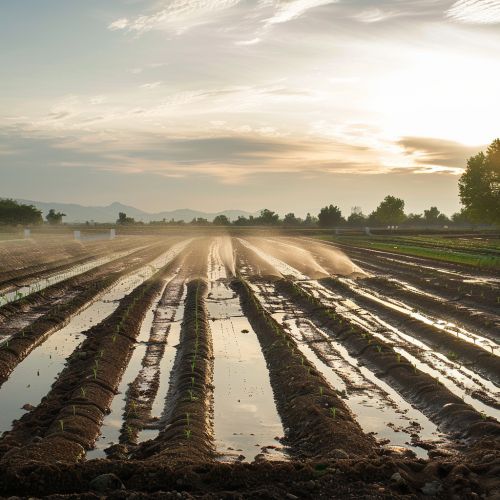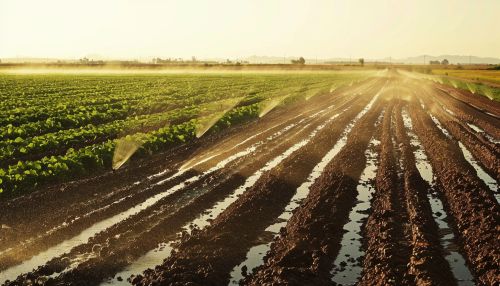Seepage irrigation
Overview
Seepage irrigation is a form of irrigation that involves the application of water to soil through a network of ditches or pipes, allowing it to seep into the ground and reach the root zone of plants. This method is often used in areas with high water tables or in regions where water resources are scarce.


History
The practice of seepage irrigation dates back to ancient times, with evidence of its use found in various civilizations around the world. The Egyptians, Indians, and Chinese were among the first to utilize this method, taking advantage of their naturally high water tables to irrigate their crops.
Principles
Seepage irrigation operates on the principle of capillary action, where water moves upwards from a water source into the soil. This is facilitated by the soil's natural porosity and the cohesive and adhesive properties of water. The water seeps into the ground, saturating the soil and providing moisture to the root zone of plants.
Types of Seepage Irrigation
There are several types of seepage irrigation, each with its own unique characteristics and applications. These include:
Subsurface Seepage Irrigation
In subsurface seepage irrigation, water is applied directly to the root zone of plants through a network of underground pipes or ditches. This method is particularly effective in areas with sandy soils, as it minimizes water loss due to evaporation and runoff.
Surface Seepage Irrigation
Surface seepage irrigation involves the application of water to the soil surface, allowing it to seep into the ground and reach the root zone of plants. This method is commonly used in areas with clayey soils, as the slow movement of water through the soil helps to prevent waterlogging.
Controlled Seepage Irrigation
Controlled seepage irrigation is a more advanced form of seepage irrigation that uses control structures to regulate the water level in the irrigation ditches or pipes. This allows for precise control over the amount of water applied to the soil, reducing water waste and improving irrigation efficiency.
Benefits and Drawbacks
Like all irrigation methods, seepage irrigation has its benefits and drawbacks.
Benefits
Seepage irrigation is a water-efficient method of irrigation, as it minimizes water loss due to evaporation and runoff. It also allows for the application of water directly to the root zone of plants, promoting healthy plant growth and reducing the risk of disease. Furthermore, seepage irrigation can be used in areas with high water tables or in regions where water resources are scarce.
Drawbacks
On the downside, seepage irrigation can be costly to install and maintain, particularly in the case of subsurface seepage irrigation. It may also be unsuitable for use in areas with heavy clay soils, as the slow movement of water through the soil can lead to waterlogging. Additionally, seepage irrigation requires a reliable source of water, which may not be available in all regions.
Future Perspectives
With the increasing demand for water-efficient irrigation methods, the use of seepage irrigation is expected to grow in the future. Advances in technology, such as the development of more efficient control structures and the use of remote sensing technology to monitor soil moisture levels, are likely to further improve the efficiency and effectiveness of seepage irrigation.
